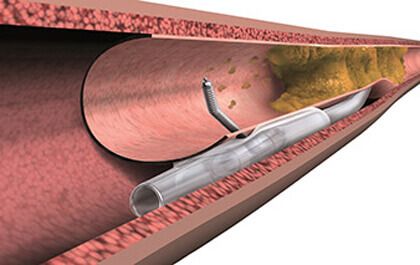The benefits offered to patients by attempting the rechanneling of a chronic total occlusion are still unclear. Additionally, sometimes the procedural risks are somewhat undetermined.

All patients with chronic total occlusion (CTO) eligible for angioplasty were included and randomized to rechanneling or medical treatment. All additional significant lesions were treated before randomization.
Read also: CoreValve US Pivotal High Risk Trial: at 5 years, similar results.
All patients underwent cardiac magnetic resonance imaging at baseline and 6 months after the procedure.
The primary endpoint was the change in segmental ventricular wall thickening in the CTO area. Secondary endpoints included improvement of regional motility and changes in ejection fraction. All major cardiovascular events at 12 months were also registered.
In total, 101 patients underwent rechanneling of their chronic total occlusion and 104 received medical treatment.
Read also: Clinical Utility of CT-Derived FFR for Decision-Making.
Thickening of the left ventricular wall was similar for those who underwent angioplasty and those who did not (4.1 [14.6 to 19.3] vs. 6.0 [8.6 < 6.0]; p = 0.57). Similar results were obtained as regards other regional or global function indexes.
The subgroup analysis showed that only patients without other lesions besides the total occlusion (Synergy Between Percutaneous Coronary Intervention With Taxus and Cardiac Surgery [SYNTAX] score ≤13) improved in segmental wall thickening after angioplasty (p for interaction = 0.002).
Read also: Cautious Administration of Supplemental 02, Especially in Acute Stroke or MI.
Major cardiovascular event rates at 12 months turned out to be lower in the angioplasty group (16.3% vs. 5.9%, p = 0.02).
Conclusion
No benefits were observed as regards the primary endpoint (wall thickening in the revascularized segment) or any other segmental or global ventricular function index. There was, however, a reduction in major cardiovascular events at 12 months in patients who underwent angioplasty for total occlusion.
Original title: A Randomized Trial to Assess Regional Left Ventricular Function After Stent Implantation in Chronic Total Occlusion. The REVASC Trial.
Reference: Kambis Mashayekhi et al. J Am Coll Cardiol Intv 2018. Online before print.
Subscribe to our weekly newsletter
Get the latest scientific articles on interventional cardiology
We are interested in your opinion. Please, leave your comments, thoughts, questions, etc., below. They will be most welcome.


